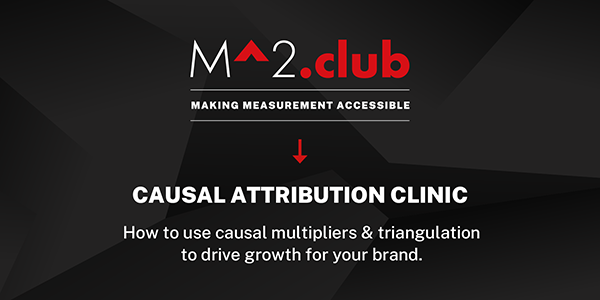For as long as I’ve been in marketing measurement, people have been searching for the “easy button,” the one tool, model or platform that will finally tell them which marketing dollars truly drive growth. But, after 15 years and four attribution startups, I can tell you with confidence: The easy button doesn’t exist.
Tools matter, but they’re only about 25% of the solution. The other 75% is expertise, knowing how to apply the right tools to your unique business context. In other words, the difference between good and great measurement is a lot less about the technology you use and a lot more about the framework that guides how you use it.
Build a framework before fancy modeling
Before diving into advanced modeling or data science, every brand needs a measurement framework that’s both consistent enough to drive standardization and flexible enough to fit each unique business. At M-Squared, we tackled this challenge by developing what we call the Marketing Accounting Framework (MAF). Think of it as GAAP accounting for marketing.
MAF standardizes how we report marketing’s causal impact on the business in a way that both CMOs and CFOs can understand and trust. It creates a shared language between marketing and finance that’s grounded in business outcomes instead of ambiguous marketing metrics.
When a CMO can tell the CFO, “You gave me $1 million to spend on TikTok last quarter, and it drove $4 million in incremental GMV and $600,000 in contribution margin,” they’ve made their entire business case. If marketing can do that for every line item in its media portfolio, it has officially earned a seat at the financial table.
Causality, not certainty
Measurement tools like marketing mix modeling (MMM) or incrementality testing have been sold as magic. But the reality is much less magical. These are statistical methods trying to approximate human behavior, and human behavior is complex. It’s impossible to model it perfectly, which means every attribution system has uncertainty built in.
But here’s the thing: Marketers don’t need certainty; we need confidence in causality. By using triangulation and causal multipliers to connect learnings from MMM, incrementality and last-click data, we can form a more complete view of performance. These techniques help marketers translate insights from imperfect models into operational metrics the business can actually use.
Turning insights into action
No two businesses – or channels or audiences – behave the same. That’s why advanced attribution must be flexible. A good causal framework adapts to each brand’s realities instead of forcing a one-size-fits-all model.
The final ingredient is alignment. Your teams need to have a shared understanding of what the analytics insights mean and how to use them. That’s where governance comes in. When marketing, finance and analytics work from the same playbook, insights become decisions and measurement moves the business forward.
There’s still no easy button – and that’s a good thing
After decades of chasing the “easy button” for marketing measurement, marketers are recognizing that true attribution depends on foundational frameworks more than groundbreaking technology.
When marketers combine a clear framework, causal thinking and disciplined governance, they stop searching for shortcuts and start creating clarity. The result is accountability that everyone – from CMO to CFO – can stand behind.
There may never be a single model that explains everything. But with the right framework, marketers can finally have a way to explain what matters most.
For more articles featuring Madan Bharadwaj, click here.
















